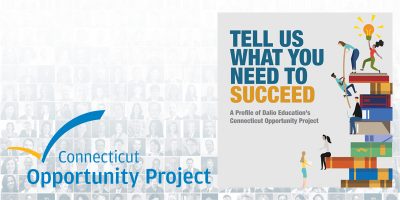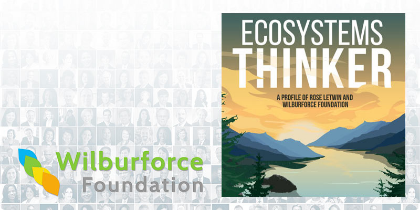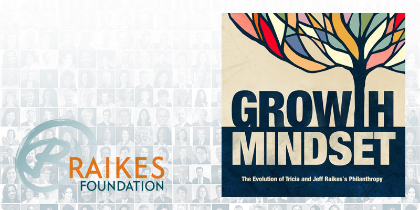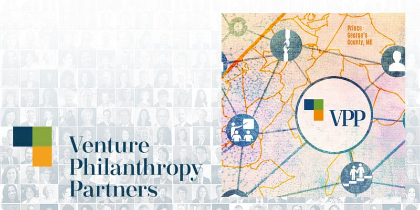Surfer Doctor Leader Gadfly
We’ve met our match. And then some.
In the 2011 book Leap of Reason, philanthropist Mario Morino calls out other funders for being quick to demand results but slow to support them: “Nonprofits need creative funders willing to think big with them—not just pester them for more information on results.”
After Leap of Reason appeared, we learned that Morino’s tough-love critiques of funder practices are tame, compared with those of Dr. Kevin Starr, the managing director of Mulago Foundation. For those of you who are not familiar with Starr’s posts, which he shares frequently in Stanford Social Innovation Review, here’s some representative truth-telling:
When you change the equation to unrestricted money for real impact … the dynamic can start to shift: donors give doers the dough they need to create impact; doers give donors the impact they need to justify their existence. It starts to look less like feudalism and more like symbiosis.
I live for the day that a foundation chief executive … gets fired—explicitly—for lack of impact. Funders have coasted for way too long, shifting the blame for any lack of progress to the doers.
After reading and admiring Starr’s bold writing—and hearing glowing things from members of the Leap Ambassadors Community about Mulago’s support for grantee performance—we reached out to Starr to learn more about Mulago’s work. He invited us to come to San Francisco to visit with him and his colleagues.
During our visit at Mulago’s modest, rented office, Starr told us that he developed his straight-ahead writing style well before he got his start in philanthropy. While he was a medical student at UCSF (and often skipping class to surf big waves along the California coast), he landed a part-time gig as a columnist for Surfer magazine. The magazine turned out to be a great training ground for good writing. The editors—and the surfers who read the magazine—had no patience for jargon and insisted on radical simplicity and clarity.
Given Starr’s signature writing style, we thought we might find a brash guy who doesn’t suffer fools. Instead, we found a soft-spoken man who’s candid about his own missteps. Given what we had read about his work as an ER doc and war-zone aid worker (not to mention big-wave surfer), we expected a macho adrenaline junky. Instead, we found a soulful leader who teared up when describing the work of grantees on the ground in rural Africa and Asia.
As we chatted, we found not only a great story about Starr and Mulago’s small but mighty team. We also found a powerful story about a foundation’s transition from arm’s-length checkwriter to a changemaker whose grantees are overflowing with praise for the way it supports their ability to perform at a high level. We believe Mulago’s story has relevance for any foundation leader who, like Starr, is fed up with feudalism and eager for impact.
A Life Well Lived
This year marks Mulago’s 50th anniversary. This milestone likely will pass with little fanfare, consistent with how the foundation got its start.
Rainer (pronounced RYE-nur) Arnhold, Mulago’s founder, was a San Francisco pediatrician who spent months every year treating children in the world’s poorest communities. Even though he never spoke of it, his family had amassed a large banking fortune. In 1864, Arnhold’s grandfather established a bank in his hometown of Dresden, Germany. The bank prospered until the 1930s, when the Nazis came to power and Arnhold and his family, who were Jewish, fled the country. Arnhold eventually was lucky enough to gain refuge in the United States, where he enlisted in the U.S. Army and fought on horseback in India and Burma in the final years of World War II.
In 1968, when he was a practicing pediatrician, Arnhold quietly established his foundation. Instead of putting his own name on it, he named it after the public hospital in Uganda where he had treated children with just about every affliction known to humankind.
Starr had no idea that the Arnhold had a fortune or a foundation when the two met in the 1980s. “I had gone climbing in the Peruvian Andes and came back shocked at how little medical care was available,” Starr told us. “So, like every naïve American, I started a project to do something about that. And everyone at UCSF said, ‘You’ve got to talk to Rainier Arnhold.’ So I tracked him down.”
 The young medical student and the eminent pediatrician hit it off immediately. During their trips to South America, Arnhold taught Starr the basics of working in poor, rural settings—and became his most important mentor.
The young medical student and the eminent pediatrician hit it off immediately. During their trips to South America, Arnhold taught Starr the basics of working in poor, rural settings—and became his most important mentor.
In 1993, when Arnhold was 69, he and Starr traveled together to the Bolivian Andes. On the second day of hiking, the ultra-fit Arnhold was about 100 meters ahead of Starr when the pediatrician crumpled to the ground. “I ran to him, but he was already pulseless,” Starr said. “It turned out that he’d had a massive stroke. He died instantly.”
Arnhold’s older brother, Henry, was devastated when Starr called from Bolivia to tell him what had happened. Henry, a banker like his father and grandfather, lived a very different life than Rainer, but the two brothers cared deeply about each other. Henry knew immediately he wanted to make sure his brother’s life work continued.
Henry had his own foundation and a wide range of philanthropic interests, including rebuilding and strengthening his hometown of Dresden—a remarkable statement about post-Holocaust forgiveness and healing. Nonetheless, he wanted to maintain and strengthen Rainer’s foundation as well. So he asked Starr—along with Rainer’s nephews Peter Seligmann and John Arnhold—to help him jump-start Mulago. “I started traveling like crazy, looking at projects, trying to figure out what works—wandering in the wilderness, literally and figuratively,” Starr explained.
During these travels, Starr met many charismatic, hardworking leaders. But he was disappointed to see that “nobody was measuring impact,” he said. He also feared that the programs he visited—from small-scale agriculture projects to conservation efforts focused on the poorest families—were more an accumulation of activities than the product of intentional design. The lack of design was jarring for someone who had grown up in a family of architects.
Design Thinkers
It took Starr more than a decade of travel and study to understand how Mulago might add real value for leaders who wanted to design, measure, and perform at a high level. “When I got myself clear on that, I cast about for someone to help me build an organization to translate those initial ideas into systematic action.”
Starr’s first big hire, in 2007, was a great one. He brought on Laura Hattendorf, who developed strong problem-solving skills in her early life (working in the family restaurant business), in academia (Wharton undergrad, Stanford MBA), and in her professional life as an entrepreneur in the private and social sectors (Sustainable Conservation, McArthur Glen Group, Strategic Planning Associates). “We have very complementary skillsets and training, and we work well together to evolve ideas and strategies.” Starr said. “Laura also knew how to turn ideas into operations…. She hadn’t spent a lot of time in settings of poverty, but I had.”
Starr and Hattendorf have created a team of accomplished generalists, including Kristin Gilliss Moyer, who fits that description perfectly. “To be good investors … we have to see patterns and parallels between agricultural extension and community health workers,” Hattendorf told us. “Our professional team of smart generalists can see those patterns. Experts in silos often don’t.”
The team’s funding approach is, as you would expect from an organization led by Starr, extremely clear and jargon-free:
- We fund high-impact organizations to do what they do well…. We don’t invest in organizations that don’t measure impact. They’re flying blind and we would be too.
- Impact at scale doesn’t come from projects; it comes from the work of organizations.
- Unrestricted funding drives innovation and growth…. If we don’t think an organization knows how to use the money better than we do, we don’t give them any.
- We don’t abandon a good thing. If we continue to see real impact and clear progress toward scale, we stay in the game.
- We don’t take proposals. Proposals are a hassle for all concerned and rarely give us the information we need.
- The last thing we want is to waste the time and energy of those who are trying to save the world. We ask for annual milestones and their impact methodology; beyond that, we rely on documents they should already have on hand.
- We get out to the field, advise when we have something useful to say…. We expect to be engaged, but we stay out of the way when we don’t have value to add.
Mulago goes into more detail on its approach to design in its “DIF” (Design Iteration Format). With approachable language and concrete examples, the DIF lays out a process for clarifying mission, the big idea, key outcomes, model, and “who will replicate and who will pay for your model at scale.” For grantees not already steeped in “design thinking,” Mulago organizes full-day workshops to help guide them through the DIF.
Despite the slightly inelegant name, the document provides a beautifully simple approach to designing for impact. We encourage you to download it and see for yourself.

A Pipeline of Great Leaders
One of Mulago’s biggest challenges has been finding leaders who are ready and able to apply this design thinking in a way that meets the foundation’s high bar for rigor. And that has created tension at times.
Soon after Starr joined Mulago, the foundation funded an organization working on conservation and community health in Tibet. Its brilliant, inspiring founder became one of Starr’s mentors. They traveled all over Tibet, visiting villages and hearing stories. When Starr asked the leader to help him understand the organization’s impact in terms of numbers rather than stories, his mentor balked. “He was insulted that the wonderful stuff we’d seen and the moving stories we’d heard weren’t enough. I needed measured outcomes to achieve a shared reality. If I took impact on faith, I wouldn’t be doing my job.” Unable to resolve the issue, Mulago and the organization parted ways.
To help steep prospective grantees in Mulago’s approach to design and impact, the foundation created the Rainer Arnhold Fellows Program, two years of deep engagement with the Mulago staff and outside faculty that comes with a $100,000 grant. About two-thirds of Mulago’s current grantees went through the fellowship before joining the Mulago portfolio. “We travel in the field with them. We give them as much input on their work as they ask for. We give them a travel fund that allows them to see each other. It’s the major onramp for our portfolio,” Starr explained.
Starr regards the intensive weeklong fellows course, held in Bolinas, CA, as “the high point of my year.” The fellows clearly get a lot out of the experience as well. They value the program not just for gaining entrée to Mulago and its team but also for how it helped them refine their models.
 Dr. Raj Panjabi, who narrowly escaped civil war when he was growing up in Liberia and now runs Last Mile Health, which has dramatically expanded access to healthcare in Liberia: “Working with Laura Hattendorf and Kevin Starr as a Rainer Arnhold Fellow gave me and my team an opportunity to shape Last Mile Health into what it is today…. Mulago is not simply a funder to Last Mile Health. Mulago is a visionary leader that has helped to shape the trajectory of our organization.”
Dr. Raj Panjabi, who narrowly escaped civil war when he was growing up in Liberia and now runs Last Mile Health, which has dramatically expanded access to healthcare in Liberia: “Working with Laura Hattendorf and Kevin Starr as a Rainer Arnhold Fellow gave me and my team an opportunity to shape Last Mile Health into what it is today…. Mulago is not simply a funder to Last Mile Health. Mulago is a visionary leader that has helped to shape the trajectory of our organization.”
Kate Cincotta, a former MIT aerospace engineer who is the co-founder and executive director of Saha Global, which helps entrepreneurial women in Ghana sell clean water that all can afford: “The Rainer Arnhold Fellows Program has been transformative for both Saha and for me as a leader. The mentoring I received from Mulago and the other fellows has been incredibly helpful and practical as Saha gears up to bring our work to scale…. Personally, I have met so many wonderful people through the fellows program that have become great colleagues and friends.”
The J Curve
One of the most important elements of Mulago’s selection process is assessing whether the prospective fellow or grantee has an idea that could, with the right support, improve the lives of a million or more people. Rainer once confided in Starr that he felt he was “plowing the sea”—that is, not creating large-scale, lasting change. Starr and his team have taken that lament to heart and are addressing it head on.
Scale, to Mulago, means more than just growth. It means exponential growth, in which impact (I, in the graph below) accelerates over time (T, in the graph below).

To assess whether an idea has the potential to rise up the J curve, the Mulago team focuses on a concept that every fellow and grantee knows well and calls by the shorthand term “doers and payers.” Mulago’s DIF template explains the concept as follows: “If you want to get to real scale, there are two critical questions that really matter: 1) Who’s the doer and 2) Who’s the payer? You’ve got a model—the thing you do. Who’s going to replicate—do—it, and who is going to fund that replication?”
In terms of doers, Mulago coaches grantees to recognize there are only four options: the grantee itself, NGOs working together, businesses, or governments. In terms of payers, there are four options as well: customers willing to pay, local governments, foreign aid, and private philanthropy.
Once grantees demonstrate they have what it takes to achieve scale, Mulago sticks with them through thick and thin. “Mulago is in it for the long game,” said Ella Gudwin, president of VisionSpring, which is working to provide vision care and eyeglasses for millions of customers at the “bottom of the pyramid.” “As long as they believe the J curve is possible for a social enterprise, and they see us making meaningful progress upwards, they continue to invest.”
Beyond investing their own dollars, Mulago also invests significant time and social capital in connecting grantees with other donors. In 2013, Mulago helped create Big Bang Philanthropy, a consortium of like-minded international funders. “We always felt that funders have a unique platform to reach out to other funders [on behalf of their grantees],” Starr shared. “We came to see that we had an obligation to do it.” In the words of Mulago’s Gilliss Moyer, “Part of our core work is to champion high-impact solutions and drive more resources to the pioneering organizations we think can actually deliver them at scale.”
The funders who participate in Big Bang Philanthropy don’t pool funds, but they must commit to dedicating at least $1 million a year to poverty solutions in developing countries and funding at least five organizations in common. Big Bang started with five funders. It now has 15 and is poised to add more in the coming years.
The day before we arrived for our visit with the Mulago team, they had just convened a summit for Big Bang members and other foundations interested in agriculture. The “Future of an Acre” event focused on what’s next for small farms. “We assembled 20 of the leading farm-focused organizations in the world—from the Rift Valley to Silicon Valley—and selected the best funders and thinkers we know to join them in conversation,” Gillis Moyer said.
Big Bang is making a big difference across Mulago’s portfolio. Last Mile Health is a great example. It has landed more than $7 million in funding from other Big Bang members, in addition to $1.8 million from Mulago. Mulago’s advocacy was likely instrumental in Panjabi winning the prestigious Skoll Award for Entrepreneurship, which carries a $1.25 million prize—greater than the monetary value of the Nobel Prize. All told, “Since first receiving support from Mulago in 2013, Last Mile Health’s budget has increased tenfold, due in large part to Mulago’s support and advocacy,” Panjabi told us.
This expansion couldn’t have come at a more critical time for Liberia and the world. In 2014, Liberia was hit with a devastating Ebola outbreak. The country’s medical infrastructure had been devastated by years of civil war and was down to only 50 doctors for a population of more than four million. Last Mile Health was able to train 1,300 community health workers to fight the epidemic. President Bill Clinton, who visited Liberia shortly before it was declared Ebola free, credited Panjabi and his team with playing a critical role in helping the government contain the epidemic. “To spend time with Raj Panjabi is to see up close what happens when someone with uncommon courage and compassion puts himself on the front lines of the world’s most complex challenges,” Clinton wrote in TIME.
Matt Forti, the managing director of One Acre Fund, which helps more than a half-million small farmers in Africa grow their way out of poverty, offered similar feedback on the value of Mulago’s introductions and advocacy: “With their stellar reputation for identifying and supporting high-impact organizations, their funding has also served as a seal of approval for countless other One Acre Fund supporters.”
Cincotta also has high praise for Mulago’s fundraising support. “They have been huge advocates for Saha and our work,” she said. “They have introduced us to new funders, served as references, invited me to speak at their board dinner, and even published an article about our work after a site visit. Over the past year, almost all of our new funding partners came to us through a Mulago introduction or decided to fund us after speaking with Mulago as a reference…. Mulago supports our journey toward high performance more than any other funder.”
This support has translated into significant impact on the ground. Since Cincotta became a Rainier Arnhold Fellow, Saha has nearly doubled the size of its team in Ghana and secured funding from two other Big Bang funders (among many others). They are now on track to bring clean water to almost one million people by 2023. Before Cincotta became a fellow, Saha spent eight years working to reach 50,000 people.
Conclusion
When we asked Hattendorf to reflect on what she’s most proud of in her decade at Mulago, she talked about the modeling she’s doing for other funders: “It’s really important to me to both be rigorous and empathetic at the same time. It’s not one or the other. It’s heart and mind together. It’s the way we hope others in our space will operate.”
Starr, for his part, will continue preaching to the unconverted in his passionate, fiery way. “You can call it strident, but don’t call it fearless,” he said. “It’s not courageous for us to speak truth to funders. They can’t fire us, and they can’t take away our funding. And we have a very supportive board. It’s easy for us.”
We recognize that not all funders are in a position to get on a soapbox. But please consider the blunt talk and sharp thinking emanating from Mulago’s modest, egalitarian office space in San Francisco. What more might you do with your grantees to encourage symbiosis rather than feudalism—and a true market for impact rather than a superficial circus? We suspect you’ll find that Mulago’s work in the developing world is equally applicable in your world.

Do you want to learn more about how donors and grantees can work together to enhance their effectiveness? Read about Funding Performance here, and let us know your thoughts.

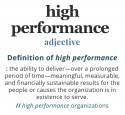
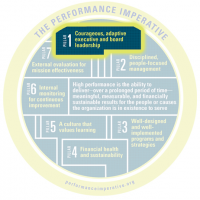
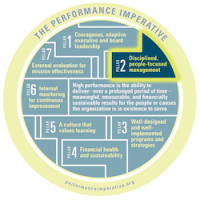
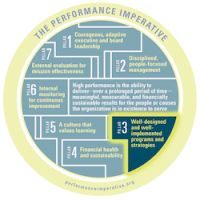
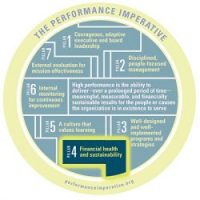
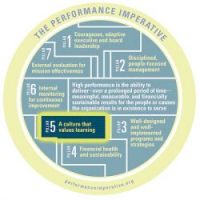
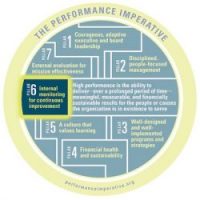
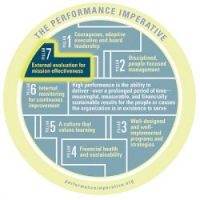
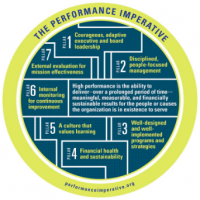
 The young medical student and the eminent pediatrician hit it off immediately. During their trips to South America, Arnhold taught Starr the basics of working in poor, rural settings—and became his most important mentor.
The young medical student and the eminent pediatrician hit it off immediately. During their trips to South America, Arnhold taught Starr the basics of working in poor, rural settings—and became his most important mentor.



